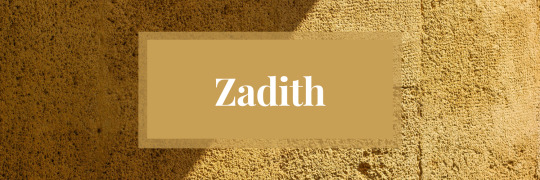#vlastomil route leaked he drags you out to the middle of the fucking desert for a worm that inevitably gets picked up and eaten by a roc
Text
Arcana Bestiary : Day 3

ʙᴀɴɴᴇʀ ᴀɴᴅ ᴇᴠᴇɴᴛ ᴄʀᴇᴀᴛᴇᴅ ʙʏ @mappingthearcana
Zadith, an old country situated across the Malvent Strait from Vesuvia. Despite being in such close proximity, the climate of Zadith is notably more arid and dry, with many superstitious folk warning that the Fennekh Desert will swallow up the land if left unchecked. Zadith is the birthplace of alchemy, the art of joining magic and science together. Some of the greatest improvements to everyday life, medicine, and technology have come from Zadith.
Below is a field guide of some of Zadith’s creatures, particularly those that are found in the nearby desserts and oasis
Rattling Hydra: Found in both Zadith and across the Malvent Strait in Nopaland the Catclaw Desert, the Rattling Hydra is a fearsome beast that has long since been a danger to travelers and rural villages in the region.
The hydra resembles a pit viper and bears six to eight heads, all of which have a venomous bite. It has a mottled brown body with a distinctive diamond pattern down its spine. The animal’s name comes from the distinctive structure on it tails that produces a rattling sound, often as a warning that the hydra is about to strike.
Although very dangerous to obtain, the hydra’s venom is incredibly valuable for its use in medicine.
Nightsky Camel: The Nightsky Camel (also called the Blue Camel or Speckled Camel) comes from it’s distinctive coloration. It has thick, dark fur that ranges from black to blue, covering white skin, which under certain lighting makes it appear as though the animal had stars on it’s body.
While they have been introduced north to Prakra and across the sea into Vesuvia and beyond, the Nightsky Camel is local to Zadith and the Fennekh desert. They have been valuable pack and transport animals for centuries, and even wild camels have a noticeably friendly and agreeable nature.
Cactus Cat: Small to medium sized felines that bear a distinctive greenish-brown prickly coat. Kittens are born with stripes and much softer fur. Cactus cats have a long tail that ends in a rounded bulb with spines, which when threatened the cat will use like a mace.
Cactus cats nest in sand burrows or in hollowed out cacti. Their diet consists primarily of rodents, birds, snakes, and scorpions. Folklore says that they are immune to most venom, including the venom from Rattling Hydras.
Cacti Cat are a common sight around rural settlements and farms, as they are good mousers and less likely to be preyed upon by hawks, jackals, or hyenas than a regular cat. A domesticated variant of the cactus cat that retains the soft fur it has as a kitten has started to become popular with the Zadith and Vesuvian gentry.
Zadithian Roc: Found in the skies of Zadith all the way to the Clouded Mountains, the Zadithian Roc is a giant bird of prey that has been reported to be capable of carrying off adult camels and horses.
The Roc has beautiful plumage, with males being gold and tawny while females are silver and white. Chicks hatch with dark plumage that changes as they mature.
According to legend, at one time in the Clouded Mountains there was a coven of magicians who had managed to tame several Rocs, and were said to fly on their backs at night.
Masked Unicorn: Light framed and slender, these beautiful equines are found only in the deepest parts of the Fennekh desert. They have shimmering coats that blend in with the sand and heat waves when seen from afar, and have distinctive facial markings similar to an Oryx.
Like all unicorns, Masked Unicorns are hunted primarily for their alicorn, which has proved to be an ever valuable reagent for alchemy. They are most active during the hottest parts of the day, when the shimmering effect of their coats provides the most camouflage possible.
Aside from human hunters, the Masked Unicorn’s primary threats are Brass Dragons, Jackals, and Sand Worms.
Common Basilisk: Found throughout Zadith and the surrounding region, basilisks are members of the lesser draconic family, and are similar in size to a large iguana or monitor lizard. The common basilisk comes in a wide array of colors, which is thought to be an adaptational warning to other creatures of the basilisks’ natural defenses: a petrifying gaze and a venomous bite.
Common Basilisk, and any member of the Basilisk family should only be observed from afar, as recovering from petrification is a long and painful process. This has led many to think that the basilisk is an inherently aggressive creature, when in truth the creature just wants to be left alone to bask in the sun.
A few animals have a natural immunity to the Basilisk, this being other draconids and most unicorn species. Basilisk blood and saliva has very potent magical properties, which has led to the risky business (and sometimes inhumane) of basilisk farming.
#mappingthearcana#mapthearcana#zadith#asra alnazar#arcana#the arcana#arcana worldbuilding#mine#REALLY surprised to see Nopal wasn't one of the days#and since Zadith is marked as a temperate zone on the map I really wanted to focus on a more desert vibe since one is right there close by#also thought about just having one of the entries reading#'Sand Worm: the worm from Dune'#vlastomil route leaked he drags you out to the middle of the fucking desert for a worm that inevitably gets picked up and eaten by a roc
36 notes
·
View notes